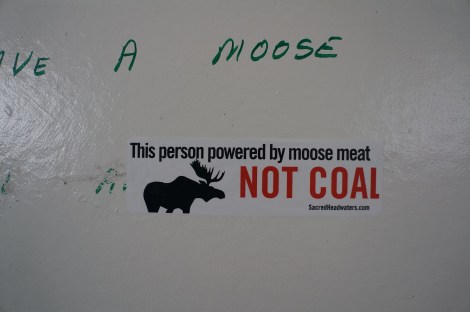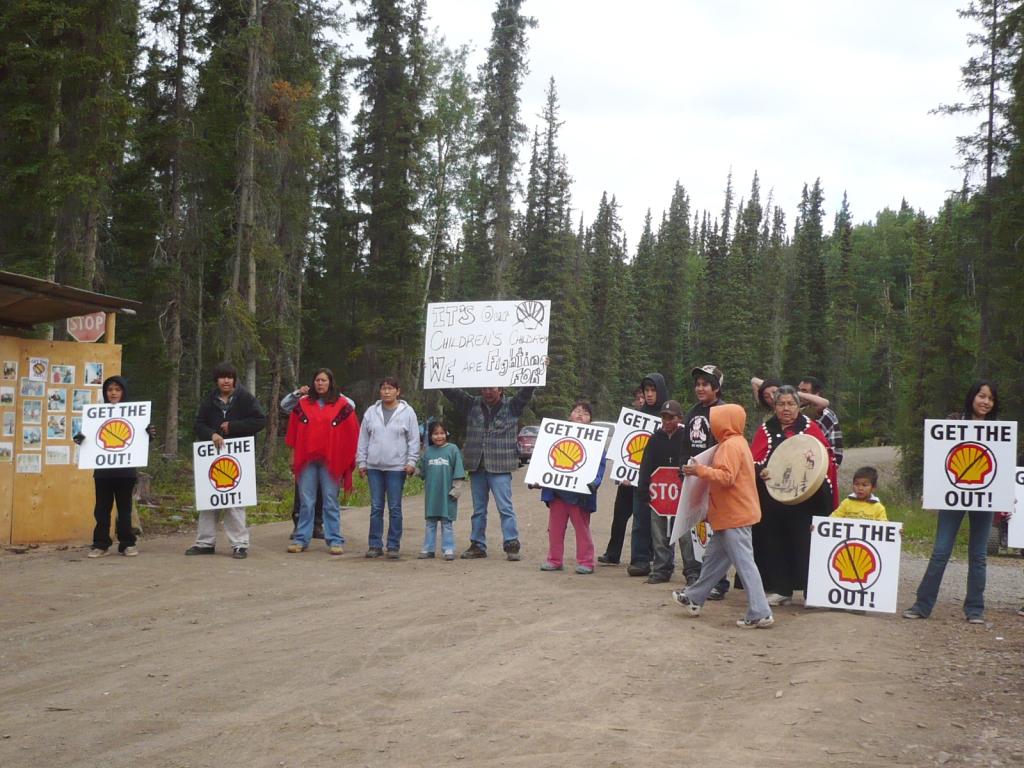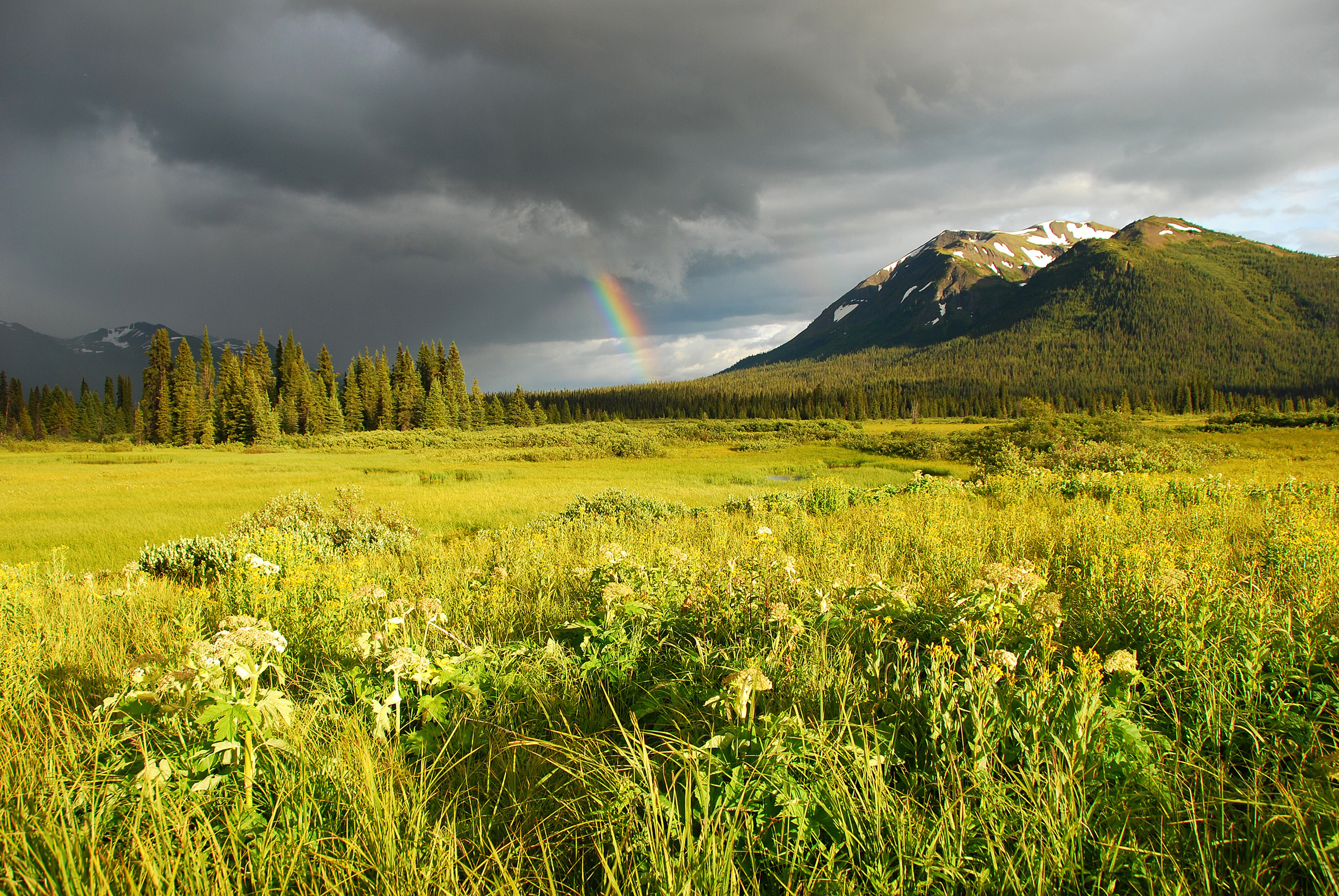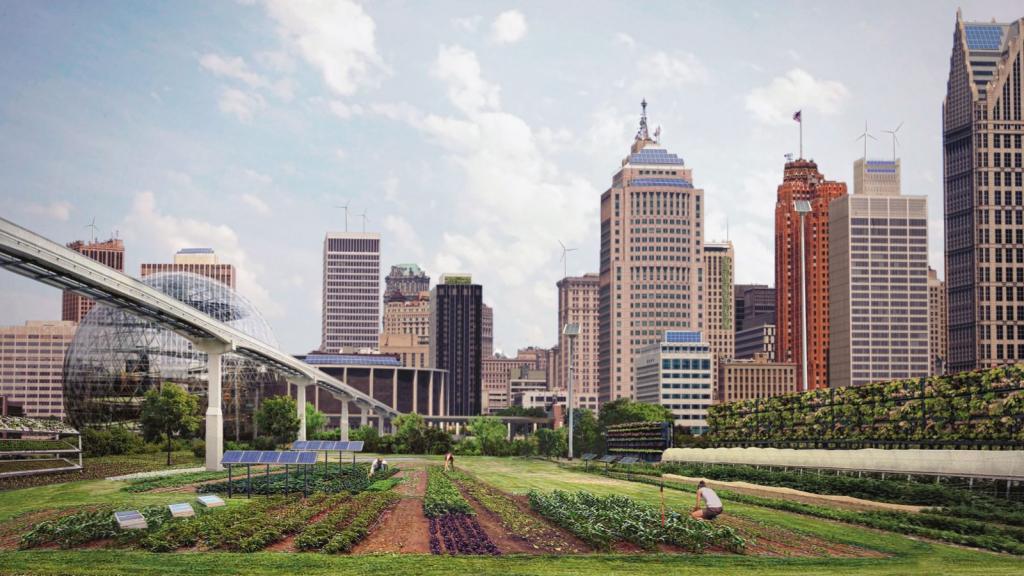Editor’s note: This is part 3 of Grist’s series on the Sacred Headwaters. Read part 1 here and part 2 here.
If one image could inflame the sense memories of almost everyone involved in the Sacred Headwaters battle, it’d be a familiar ketchup-red and mustard-yellow scallop — the logo of Dutch Royal Shell. It’s an innocuous mollusk on which to paint feelings of despair, hope, pride, frustration, desire, and anger. But tarring Shell as purely a slavering Big Bad undercuts the fact that the Sacred Headwaters owes its temporary safety, in part, to what some might call the villain of the story.

Join Grist for an exploration of recent climate wins. This is a guarded, cautiously optimistic thumbs up, mind you.
Over the phone, Shell Canada communications manager Larry Lalonde radiates a calm command of the science, politics, and economics of coal bed methane extraction in the Klappan. He’s used to unpacking dense geology, explaining it in layman’s terms, cooling it off where friction causes unwelcome hot spots. For instance, fracking: Somewhere along the way, coalbed methane extraction saw its star hitched to the prom queen of the natural gas world. But the process is precisely the opposite.
“The process is called desorption — it’s used on shallower resources, 600 meters or so below the earth,” Lalonde says. “The gas methane attached to the cleats of the coal, and water holds it in. So we need to remove the water to allow the gas release from the coal. You need to remove water as opposed to getting water into it.”
Not that desorption isn’t risky: Coal bed methane extraction carries a risk of water depletion, and caustically sodic water pulled from underground can annihilate vegetation and wildlife (even moreso when it’s contaminated with heavy metals). But when he describes the ways Shell might’ve mitigated those impacts had they proceeded, the methods sound plausible, he acknowledges those risks, and I believe he’s sincere in intent. I also kinda want to go grab a beer with him.
Of course, that’s his job. Lalonde also seems like the open, extended hand of a knife-sharp business that doesn’t do anything they don’t have to. Which makes me all the more curious why Shell did what they did a year ago: On Dec. 18, 2012, Shell chose to walk away from their drilling rights in the Sacred Headwaters forever. (Well, not completely: B.C. awarded Shell $20 million in royalties to be applied to a water treatment plant in a northeastern B.C. gas field.) B.C. Premier Christy Clark helped cement the victory by declaring the Sacred Headwaters off-limits to oil and gas drilling.
Shell’s reasoning could be cold economics. The remote, mountainous location would’ve made infrastructure an expensive challenge. And the gas itself presented problems.
“Oil and gas had changed,” Lalonde said. “The gas that we detected is dry, which means that it’s commercial-ready — similar to gas burned in an average gas stoves. It’s pretty pure methane, not a lot of liquids in it. But the liquid [natural gases] are worth more than the dry gas.”
But Shell was prepared to spend eight years and hovercrafts of money just exploring the value of the resource. I wonder if the human factor made a mark — and if Shell might remember that sting when they go elsewhere.
“I wouldn’t call [The Sacred Headwaters experience] routine, that’s for sure. It was a complex situation,” he says. “It hasn’t changed a lot of [Shell’s] approaches. As a company we’re conscious of being as good a neighbor as we can — that includes people impacted by our project and including them in as many ways as we can. We need to look at and work with communities.”
Even Wade Davis, warrior of the Klappan, gives Shell some benefit of the doubt.
“There are no enemies, only solutions — anybody who wants to paint a villain is not only being naïve but unfair,” Davis says. “Shell’s just a big company made of human beings. When I met with [Shell Upstream Americas Director] Marvin Odum after a six-minute speech about the Klappan, he said three things. ‘We don’t go where we’re not wanted. The price of natural gas is so low it’s not worth the bother. I just didn’t know how important this country this was to people.’ I was convinced then and there that Shell would do the right thing.”

Ted AlvarezBathroom humor: Sticker seen in a rest stop near the Sacred Headwaters.
As we end our conversation, Lalonde leans on science as explanation (an apology?) for Shell’s interest in the Sacred Headwaters.
“The major deciding factor in the government’s calling for bids is the geology — the geology determines where those hydrocarbons are or are not,” he says. “That just happens to be the geology of the area — there’s gas in the coalbeds there that potentially could’ve been produced, but it won’t be the case for the future. We’ve removed the last two wellheads, and the infrastructure has been removed. The rest is up to Mother Nature.”
I want to believe him, and I hope he’s right.
This week marks the first anniversary of Shell’s pullout from the Sacred Headwaters and B.C’s permanent ban on oil and gas drilling in the area. And while it’s a win — a big one, one worth celebrating — Sacred Headwaters needs a few more miracles. While Fortune Minerals finally backed off from their mining camp in August 2013 and officials have suspended coal operations in the area for a year, company execs have vowed to return in the spring pending a B.C. environmental review. And in the middle of all this, something big slipped through the cracks: This summer, Imperial Minerals began construction on the Red Chris Mine, an open-pit gold and copper dig set atop Todagin Mountain, adjacent to the Sacred Headwaters and less than 20 miles away.

Ted AlvarezEnemy mine: The Red Chris open-pit dig on Todagin Mountain.
“We’re violating a mountain that’s home to a resident population of grizzlies. Where else can you take your child and be surrounded by 400 stone sheep, perhaps the largest herd in the world?” Davis says. “I’d love to be able to say we have been successful. While we managed to get one major corporation to do the right thing, we have by no means secured protected area status for Sacred Headwaters. Unless [Imperial Minerals chief] Murray Edwards has a change of heart, we have lost one of the most important mountains in B.C.”
Province-wide, the clouds darken. Just yesterday, a federal review panel led by Canada’s National Energy Board approved Enbridge’s $6.5 billion Northern Gateway pipeline, which will pierce the Great Bear Rainforest to carry tar-sands oil 730 miles from Alberta to a port in Kitimat, B.C. The federal government has 180 days to make a final approval of the pipeline, but First Nations and B.C. opposition leaders are already digging new trenches.
Any climate wins here will not be clean.
Davis and plenty of others want the government of B.C. to declare the entire region a national park, or even a UNESCO World Heritage site. Without that or similar umbrella protection, pockets may be protected, but slices in between could be divvied up among extractive interests — and their effluvia will end up in the same rivers everyone fought so hard to protect from Shell. In September, the B.C. government and Tahltan First Nation announced a joint commitment to work toward a long-term solution.
And here is where my neat narrative construct sputters, dies, and bursts into flames. I wanted koan-clear lessons from an exotic frontier — cowboy wisdom to inspire my fellow weary urbanites to sharpen the pitchforks and return to the front lines refreshed and renewed. But it’s not that easy. It’s bureaucratic. And you will lose ground in a battle of inches. The rules change all the time.
It’s enough to make one want to take the Sacred Headwaters out of the W column. But a conversation with the Skeena Watershed Conservation Coalition’s Shannon McPhail makes me feel sheepish and embarrassed for feeling that way. She and others Northerners operate from a playbook that other communities in crisis might consider borrowing from. I’ll just let her rip in her own words:
1. Get organized. Whether you support it or not, get organized. If you don’t want to work with some eco-bump enviro group, you go sit in their office and say, “Look hippie, I’m not here to save the ganborne whales for Jesus. I’m here because I want to save my family, or my farm.” [Action] is rooted in the community. We are working with and for the anglers, with and for people who want to see places protected. Reach out to anyone who has capacity and means. Enviro groups, politicians — you just gotta reach out.
2. Respect costs you nothing. Don’t judge people for dress, what they drive, etc. We wouldn’t have oil-sands workers with “Get the Shell Out” stickers, oil workers marching in rallies to protect Sacred Headwaters if we didn’t follow this.
3. Every relationship is important. A gentleman who’s now one of our board members — I thought he was a hippie at first. Who knew?
4. Always know that you will win. Nothing can defeat you more than hopelessness.
This last one resonates, and seems to hum in sync with what the Tahltan — the dogged originators of this story — are about. It matches something Rhoda Quock said, when I asked what would happen if they lost their battle for the Sacred Headwaters.
“We know we’re going to win this one, because we’re not giving up,” she says. “In 2005, we were hearing from people, [they said] ‘they’re going to go through anyway.’ But we never gave up, we stood our ground, and we’re still not giving up. Anything is possible. It’s just how bad do you want it.”
She never answered my question.

Ted AlvarezFrozen chosen: Child swims in Tatogga Lake.
The community bonds in Northern B.C. are as varied as any, but they are sintered in extremity. When a cup of sugar is 200 miles away, one tends to overlook a neighbor’s foibles and focus on shared interests. For Northern B.C.ers, that’s the country itself — and especially the salmon.
I learn just how much when an interview with McPhail hopscotches from her home in Hazelton to a dog-haired Subaru to the Kispiox River, a sapphire tributary of the Skeena. It’s her mother’s birthday, and word is out that the cohos and chinook are running. On two fat rafts, a motley crew of family, guides, friends, and agglomerated strangers judder over the Kispiox’s gentle, late-season riffles. Shannon and her father each man the oars while an older man from Seattle unbuttons his Hawaiian shirt and lays out in the rare sunglow, casting lazily to the foam the father-son career fly fishing guides point at.
Everyone starts yelling when silver and red torpedoes streak under the rafts. Someone produces snorkels and face masks, and before I quite understand what’s happening, I’m in the crystal Kispiox with Chinook salmon the size of baguettes bulleting past my armpits. Less-shy trout swim up to peer through the glass at this southern Gumby, wondering how he got here and how much longer he’ll last.
The water stings with cold, but I feel good. I throw my hands back and float head-first-face-down, flying like Superman above an underwater gorge of green. Salmon rocket past, and I can hear the muffled ‘whoops’ of the snorkelers nearby.
What did I learn from the Sacred Headwaters, above all else?
If you love a place, that might be enough to save it.



